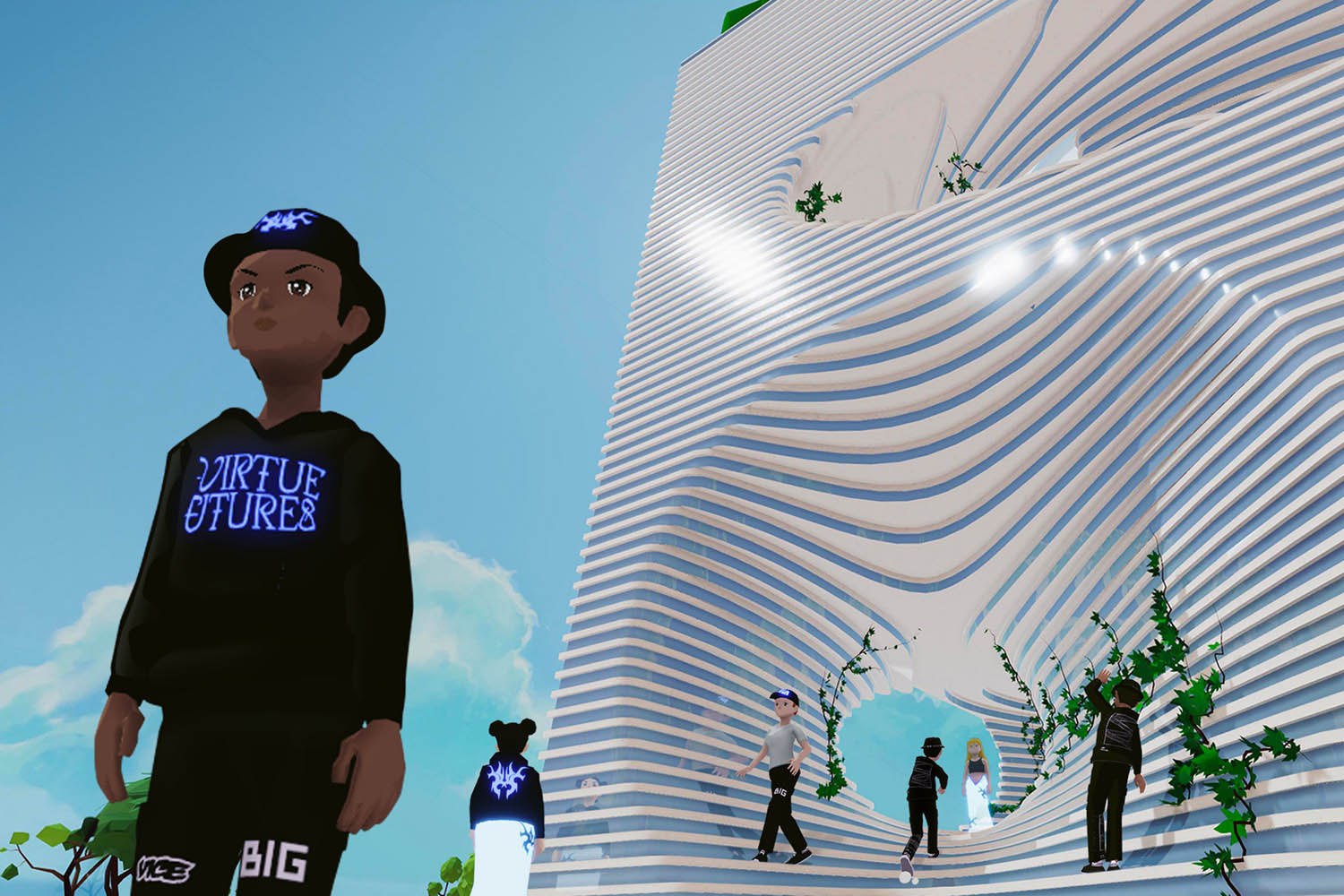By Roderick Bates, head of integrated practice, Enscape | Part of Chaos
The metaverse is set to go main stream, with the potential to be a $200 billion market by 2024, according to an estimate by analysts at Bloomberg.
Achieving this level of success will require the metaverse to become a destination that people want and need to visit. Architects, more than any other profession, understand what is required to create compelling environments, placing the profession in a unique position to take a lead in bringing definition to the metaverse.

Currently, the ultimate metaverse vision of a single, universal and immersive virtual world — facilitated by the use of virtual and augmented reality (VR/AR) headsets — exists only as a hypothetical.
While some components and technologies are available today, it certainly isn’t universal, existing on a limited number of disconnected platforms like Roblox, Decentraland, Fortnite and Mona. For the metaverse to live up to the hype, it needs to become far more interconnected, enabling the type of collaboration and immersion previously only possible in the built environment.
Architects could lead the way
Long-time experts in creating the built environment, architects and designers are well ahead of the game and poised to take the lead in the metaverse’s creation.
The modern architectural design process requires teams well-versed in design technologies including BIM, 3D rendering and virtual reality to create immersive virtual spaces that showcase projects before they are actually built.
In addition to that creative process, there’s also a requirement for the design and delivery of a building to be highly collaborative, capable of engaging a wide range of stakeholders and consultants, while also operating within strict constraints when it comes to building codes, financial costs and physics. If one were to look for a cohort prepped and ready to take on the challenge of designing the metaverse, they would be hard pressed to find a better group than architects.
As metaverse development advances, architects have the opportunity to capitalise on their expertise honed in the delivery of building in the physical world to lead the way in designing and delivering metaverse architecture governed by a new, and in some ways liberating, set of constraints.
For example, instead of considering circulation requirements and climatically driven water management strategies, architects can design spaces where occupants can teleport to, from and within a building. The pesky rules of physics, including water penetration risk, no longer apply.
Perhaps even more importantly, architects understand the ethical implications that come with designing environments for people. To quote from the American Institute of Architects, they have a longstanding professional obligation to “design for human dignity and the health, safety and welfare of the public.” From architects’ experience using visual communication tools during the design process, and from studying the way buildings interact with their occupants, architects can bring to the metaverse a much needed ethical awareness of how it might affect users, for both good and bad. With their ethical standards, architects can be a key voice for ensuring the metaverse is a constructive environment, rather than a new medium for manipulation.
While the metaverse may be in its ascendency there is clearly room for architects to assert themselves and help the metaverse realise its potential and move from trend to established technology.
A metaverse architecture
Despite skill alignment, it can be challenging for architects to identify the right metaverse entry points. Here are three tips on defining opportunities and taking the first steps toward metaverse development projects:
Consider areas ripe for metaverse development
There are several key sectors that are prime for early metaverse development. These include commerce spaces that help companies showcase their products; media and entertainment spaces, including concert venues, fashion runways and galleries; and virtual offices for companies to develop and manage the critical collaboration spaces they need for contemporary hybrid work environments.
Firms can prepare to capture new opportunities by ensuring that they have a keen understanding of the metaverse culture and how its space impacts its users
For example, Danish architecture studio BIG recently worked with Vice Media Group, a digital media and broadcasting company, to design a virtual office for Vice employees. Dubbed Viceverse, the project has given the media firm an opportunity to inspire the metaverse community and at the same time redefine journalism.
“It’s not about just getting in there and planting a flag. We wanted to do it in style with aesthetics and ideas when creating, so we teamed up with BIG,” said Morten Grubak, global executive creative director of innovation, Vice Media Group.
Global architecture firm IAXR has also embarked on an exciting metaverse project, creating an office space that enables interior designers and project stakeholders to collaborate virtually. Their metaverse workspace is accessed via VR and acts much like an actual office space with custom workflows that mimic the way they are accustomed to working.
Build a pipeline of opportunities
Architects can begin to identify opportunities for offering metaverse development by targeting both existing and new clients. Firms that don’t yet have a portfolio of metaverse work to share can benefit from building their own presence in the metaverse and offering to develop pro bono metaverse spaces that showcase their talents and capabilities.
For a universe dependent on collaboration, it makes perfect sense for firms to partner with others to explore metaverse opportunities. They can identify firms or architects that they’d like to work with, ideally those with metaverse experience, and reach out using alternative platforms, such as Discord, to expand their reach and capabilities and explore potential clients.
Conscientiously market and educate Selling a new service, including metaverse development, requires strategic marketing efforts. This includes marketing the capability as an additional service option to existing clients, for instance offering to build a metaverse commerce space for showcasing products, and advertising to a broader universe of potential clients.
In helping to define the metaverse, architects also have a responsibility to leverage their communication tactics to educate metaverse users, including the general public, about how they can be conscious consumers. Creating a code of ethics for metaverse projects that can be shared with clients and future users of the metaverse environments can help architects convey this important message.
As the metaverse unfolds, organisations across industries will look to create a stake and turn to architects and designers for guidance and know-how. Firms can prepare to capture these new opportunities by ensuring that they have a keen understanding of the metaverse culture and how its space impacts its users. Their success also depends on having the people, workflows, tech stacks and partnerships to build and manage the spaces as they evolve, and to tackle issues as they emerge, including ensuring proper governance and safe, seamless data transfer between platforms.
Top image: Hasham’s Metaverse: Hisham Laila, Creative Manager






